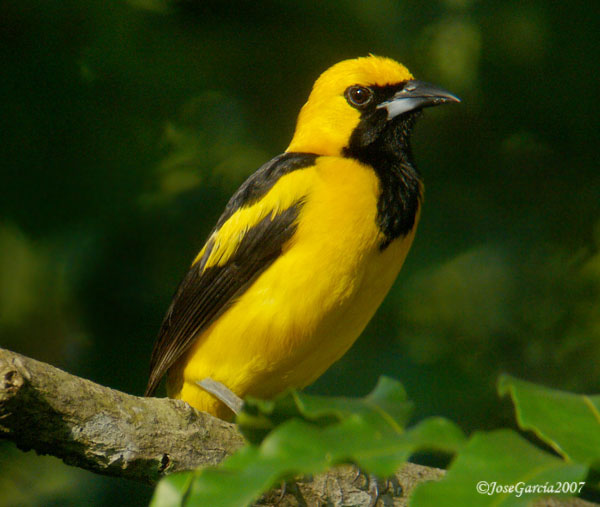|
| 질의: icterus icterus | 결과: 30번째/188 | |
Yellow-tailed Oriole (Icterus mesomelas) - Wiki
| 제목: | Yellow-tailed Oriole (Icterus mesomelas) - Wiki
| |

| 해상도: 600x507
파일크기: 76566 Bytes
촬영일: 2007:05:25 16:01:58
등록시간: 2007:12:04 11:35:04
|
Yellow-tailed Oriole
From Wikipedia, the free encyclopedia
Order: Passeriformes
Family: Icteridae
[Photo] Yellow-tailed Oriole (Icterus mesomelas) in Gamboa, Panama. Source: Flickr (http://www.flickr.com/photos/josegarcia/513922936/). Date: 2007-05-25. Author: Jose Garcia, Panama Birds (http://www.flickr.com/photos/josegarcia/).
The Yellow-tailed Oriole, Icterus mesomelas, is a passerine bird in the New World family Icteridae. It breeds from southern Mexico to western Peru and northwestern Venezuela.
The Yellow-tailed Oriole is 22-23 cm long and weighs 70 g. It is mainly yellow with a black back, lower face and upper breast. The wings are black with a yellow epaulet and the tail is black with yellow sides. This is the only oriole with yellow in the tail, hence the species’ name. The sexes are similar, but young birds have the black on the back and tail replaced with olive-green.
There are four subspecies.
Nominate I. m. mesomelas, Mexico to Honduras, has yellow fringes to the tertials
I. m. salvinii, Caribbean lowlands of Nicaragua and Costa Rica, has no yellow fringes to the tertials and is more orange than the nominate race.
I. m. carrikeri, Panama, Colombia and northwestern Venezuela, is like salvinii, but less orange and smaller-billed.
I. m. taczanowskiis, Pacific South America from Ecuador to western Peru, has white fringes to the tertials.
The calls of this species include a chick and a weechaw. The song is a melodic repetition of rich whistles, chuck, chuck-yeeaow. It is often given as a duet, with the female’s response following or overlapping the male’s longer phrases.
This large oriole inhabits dense thickets, often with vines, Heliconias and similar dense growths, in swampy lowlands. The birds forage in pairs or small groups in denser vegetations than most orioles, mainly feeding on insects, although they will also take nectar and certain fruits such as Gumbo-limbo (Bursera simaruba).
It builds a deep but thin cup nest 2 m high in a thorny scrub by a stream. It lays three dark-blotched white eggs, which hatch in 13 days with a further 14 days to fledging.
The Yellow-tailed Oriole is fairly common except in Peru and Venezuela, but is reducing in numbers in parts of its range because of persecution by the cage-bird trade; this species is valued for both its appearance and its beautiful song.
http://en.wikipedia.org/wiki/Yellow-tailed_Oriole
| The text in this page is based on the copyrighted Wikipedia article shown in above URL. It is used under the GNU Free Documentation License. You may redistribute it, verbatim or modified, providing that you comply with the terms of the GFDL. |
|
^o^
동물그림창고 똑똑전화 누리집
^o^
|
|